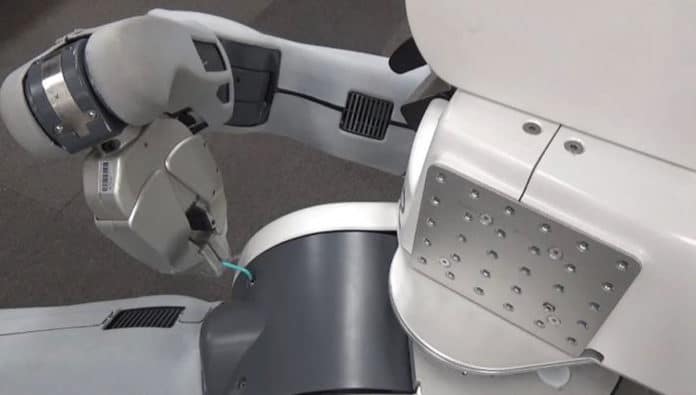At the Humanoids 2019 conference in Toronto, Canada, researchers at the University of Tokyo in Japan demonstrated how a robot could repair itself. They taught the PR2, one of the most advanced research robots ever built, to perform simple repairs on itself by tightening its own screws.
The researchers specify that at the moment, the robot cannot determine whether a particular screw needs to be tightened, although it can understand if its physical position does not match its digital model, which suggests that something went wrong. Nevertheless, the robot is able to autonomously check from time to time if the screws are tight or rely on a person to indicates that it has a loose screw.
The team also addressed that certain parts of its infrastructure will not be accessible to it. In these situations, PR2 may need a robot friend to tighten a screw they can’t reach.
The robot can use its constant rotation of the wrist for tightening the screw, but if the screw is in a difficult position, which requires an Allen wrench, it has to re-grasp the tool again and again.
If we talk about the PR 2 robot, it is equipped with ROS and other open software modules and capable of navigating autonomously and manipulating a wide range of objects. It has 66.8 cm length, 66.8 cm in width, and 165 cm height (telescoping spine extended). The 500 lb (226.8 kg) robot incorporates 32 brushed DC motors and 1.3-kWh lithium-ion battery pack, suitable for 2 hours of operation.
Besides, the wide-angle and narrow-angle stereo cameras, along with several sensors, helps the robot to perform different tasks precisely. Its powerful hardware and software systems let it do things like clean up tables, fold towels, and fetch you drinks from the fridge.
“When PR2 wants to have a lot of things, the only two hands are not enough to realize that. So we let PR2 to use a bag the same as we put it on our shoulder,” the researchers explain. “PR2 started attaching the hook whose pose is calculated with self CAD data with a driver on his shoulder in order to put a bag on his shoulder. PR2 finished attaching the hook, and the people put a lot of cans in a tote bag and put it on PR2’s shoulder.”
